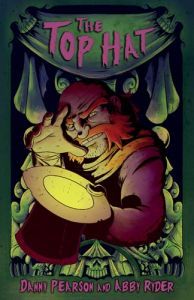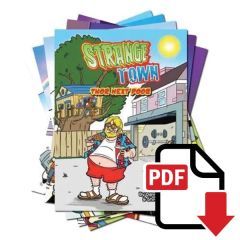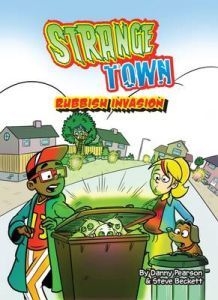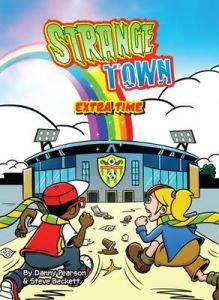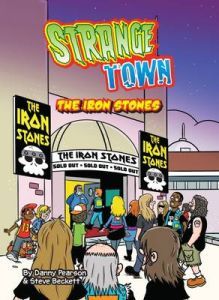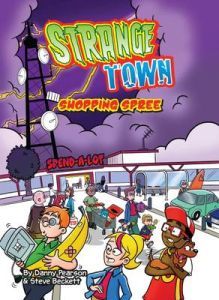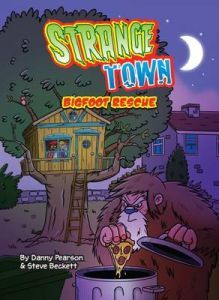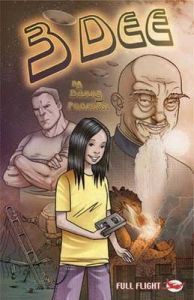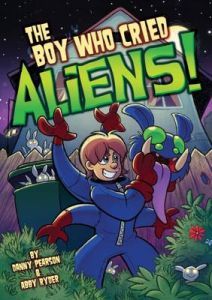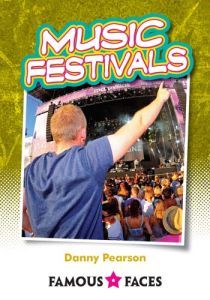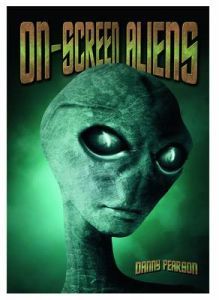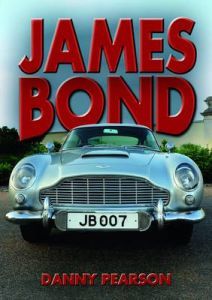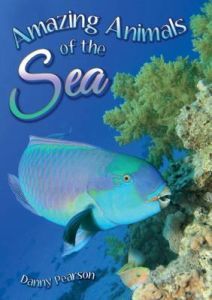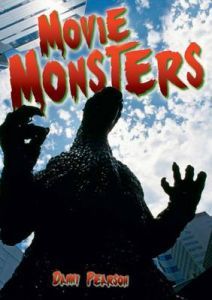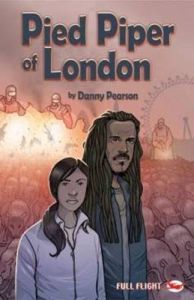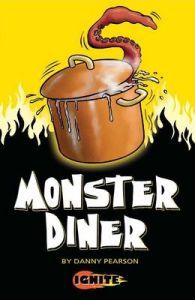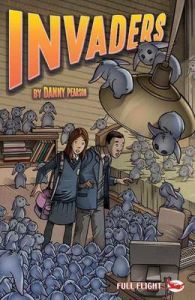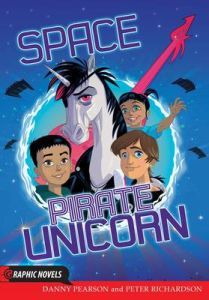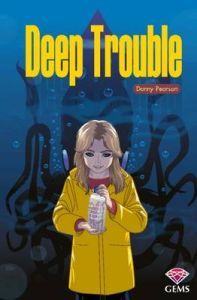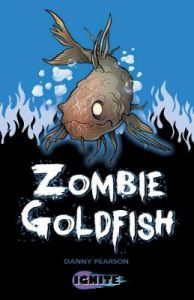Danny Pearson
Danny Pearson was very much a child of the 80s. He was brought up on a diet of unusual cartoons and movies involving things changing into other things, or adventures set to cheap keyboard soundtracks. He studied Art at college, which led him onto studying Art and Graphic Design at Leeds Metropolitan University. After graduating with no real clue of what to do he found a job as a children's bookseller at a Waterstones book store. This is where he found his love of books, children's books in particular.
He joined the Badger team in 2008 and has worked on over 1000 publications. His first book, Beekeeper, was published in 2010. He has since gone on to write over 30 books including titles such as Alien Eggs, Zombie Goldfish, Invaders, Monster Diner, Pied Piper of London, The Hamster Who Fell to Earth and The Boy Who Cried Aliens! He penned a humorous series for reluctant readers called, Strange Town which was illustrated by Steve Beckett, and most recently, The Top Hat from Badger Learning’s Big Top of Horror series, and Alice, from their popular Papercuts I series. Danny has temporarily put his pen away to concentrate on his new role at Badger Learning as Publisher and Senior Editor, so he can focus on providing more engaging and rewarding titles for struggling readers.
“I have always written about things that interest me. I was a bit of a Reluctant Reader myself when I was at school and so I like to think I know what would interest and entertain such readers. Since working at Waterstones I can't remember reading anything which wasn't a book aimed at children or young adults (which isn't a bad thing).”
Favourite quote:
"Be who you are and say what you feel, because those who mind don't matter and those who matter don't mind." - Dr. Seuss
Q&A with Danny Pearson
What inspired you to write for reluctant readers?
It all began whilst working in my local branch of Waterstones. It was my first 'real job' after I had graduated from university. After a while I found myself in charge of looking after the children's book section. It was there that I was reintroduced to the world of children's books. All the famous characters that I had known as a child were suddenly all in front of me again. It was an unexpected reunion but a valuable one. One which set me on the path to getting my own titles published.
Looking back on my childhood I would definitely have classed myself as a reluctant reader. My nose was more likely to be pressed up against a TV screen rather than buried in a book. I joined the Badger team in 2008 and after watching some of our very skilled authors pull together ideas to form a story, I realised I had enough ideas of my own that could morph into a title. After a bit of digging around in my brain I managed to pull out my first story, Beekeeper. As I read over the first draft I thought that my younger self would have loved this book. This is now something I always think about whilst working on stories for reluctant readers... would my younger self enjoy reading this?
What challenges do struggling readers face when they open a book?
The first time a book is put in front of a struggling reader is when the decision is made. The decision of whether they will enjoy the book or not. If the cover doesn't hit a cord then the book will more than likely remain shut and pushed to the side. If the pages are too crowded with text then it looks like too much of a challenge. It is closed and not opened again. If the pages look too childish for the viewer then it will also be closed and put down. It is so important to get the material looking just right for the audience intended.
What is your favourite type of character to create?
I didn't really think about this until asked. Whilst I look over the titles that I have already had published I think the answer to this would be creatures and aliens. I guess this may be because these things can be anything you want them to be. They can look like anything, act how they want and do what they want. There are no real rules on writing about such things so this leaves the door open to anything you can think up.
What features and methods do you use to ensure that your books have that High Interest appeal that really engages young readers?
If I am not enjoying writing and reading the book, then the reader will probably feel the same. I always try to write something that interests me. It also really depends on what age group the text is for. My recent graphic novel title, Space Pirate Unicorn, was a good example of where the images needed to attract the viewer first. The text, although important, very much played second fiddle to the fantastic, colourful artwork.
What difference do books like these make to children who are in need of literacy support?
Books like these are massively important. They give people a way in to reading.
Can you give us any teasers of what to expect in the Strange Town series?
In the Strange Town books you can expect to talk to a Bigfoot creature named Bob, plan how to stop an invasion of purple bins, and find yourself running away from a giant Space Kitten. You may even be lucky enough to find the time to sneak off with Thor and catch the local football match... that's been frozen by a group of out of work tooth fairies.
What are the major themes of your work?
Twists on reality! I love writing about strange things happening in a real life setting. I find it much more interesting if you read about things that could happen right here and now. It may be about a hamster that turns out to be an alien visitor who is an intergalactic gardener (The Hamster Who Fell To Earth) or a madman who kidnaps the world's bee population (Beekeeper).
What controls do you place on the vocabulary you use and how important is this?
It is vital that you always check to make sure it is suitable for the audience you are writing for. A number of times words have come up that I would have loved to have used but they would have been too hard for the reader to understand without a lot of help.
What is your favourite children's book?
That's not fair... I couldn't pick a favourite. It really does depend on what mood I am in. One minute I could be reading about zombies eating the last of the human race and the next I could be flicking through the pages of The Very Hungry Caterpillar. I will have to wimp out and say I can't pick a favourite. Please forgive me.
Do you have any advice for aspiring writers/authors?
I am a very visual person and I find it helps to cut out, print, doodle pictures and use photos to go with your ideas. Stick them in a book and scribble notes next to them. That way the ideas are down and you can always go back to them if you get stuck whilst writing. There are no 'bad ideas', just some are better than others.
Speak to our team today on 01553 816082 or if you would prefer us to call you back then please enter your details in the form below and a member of our team will call you back.


